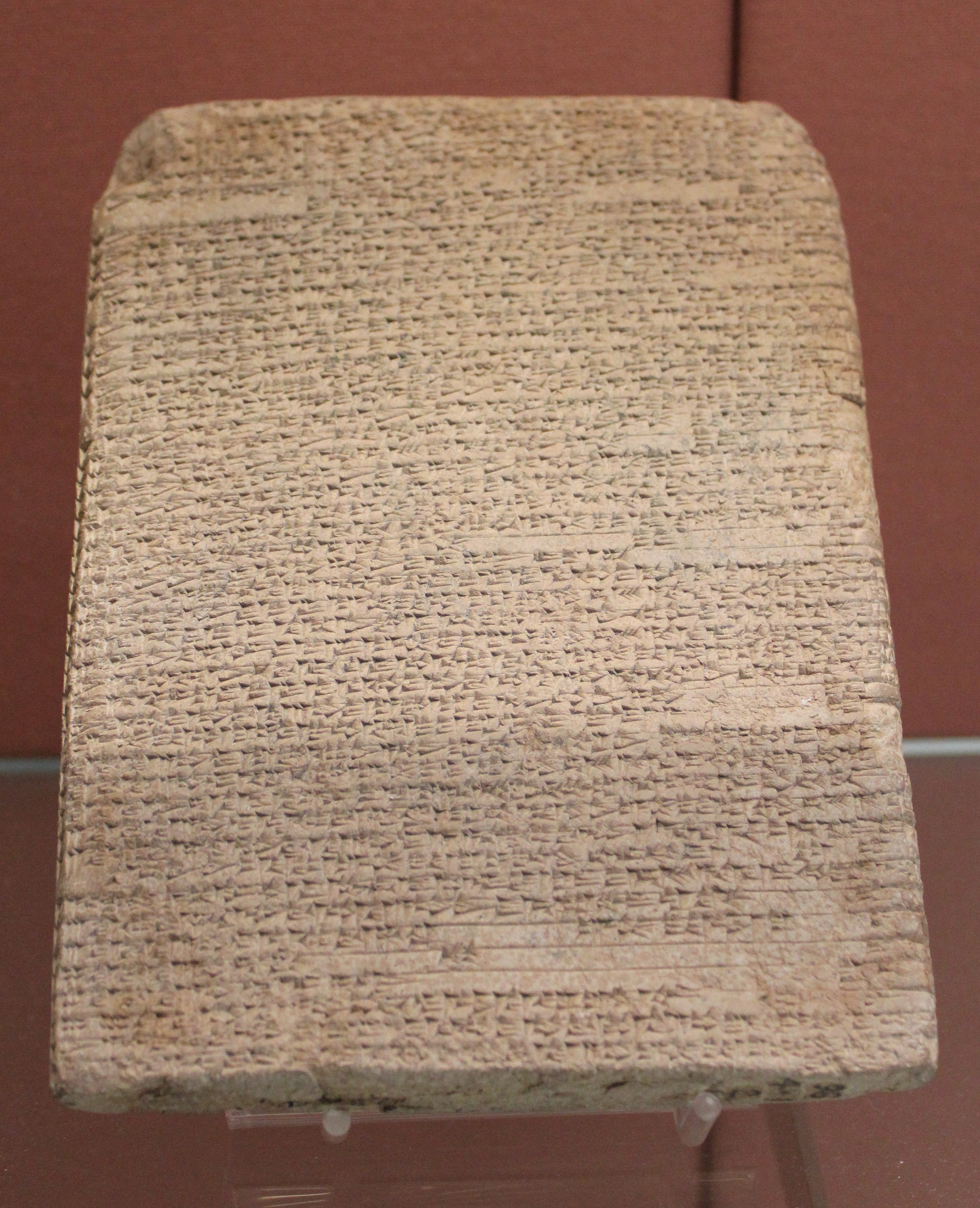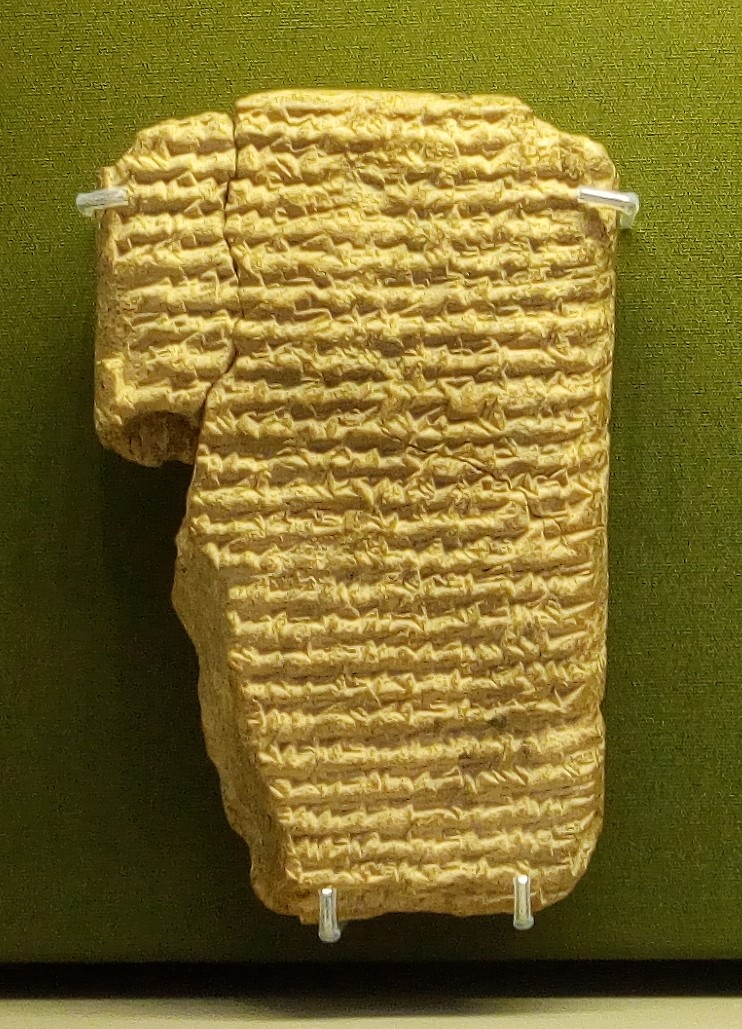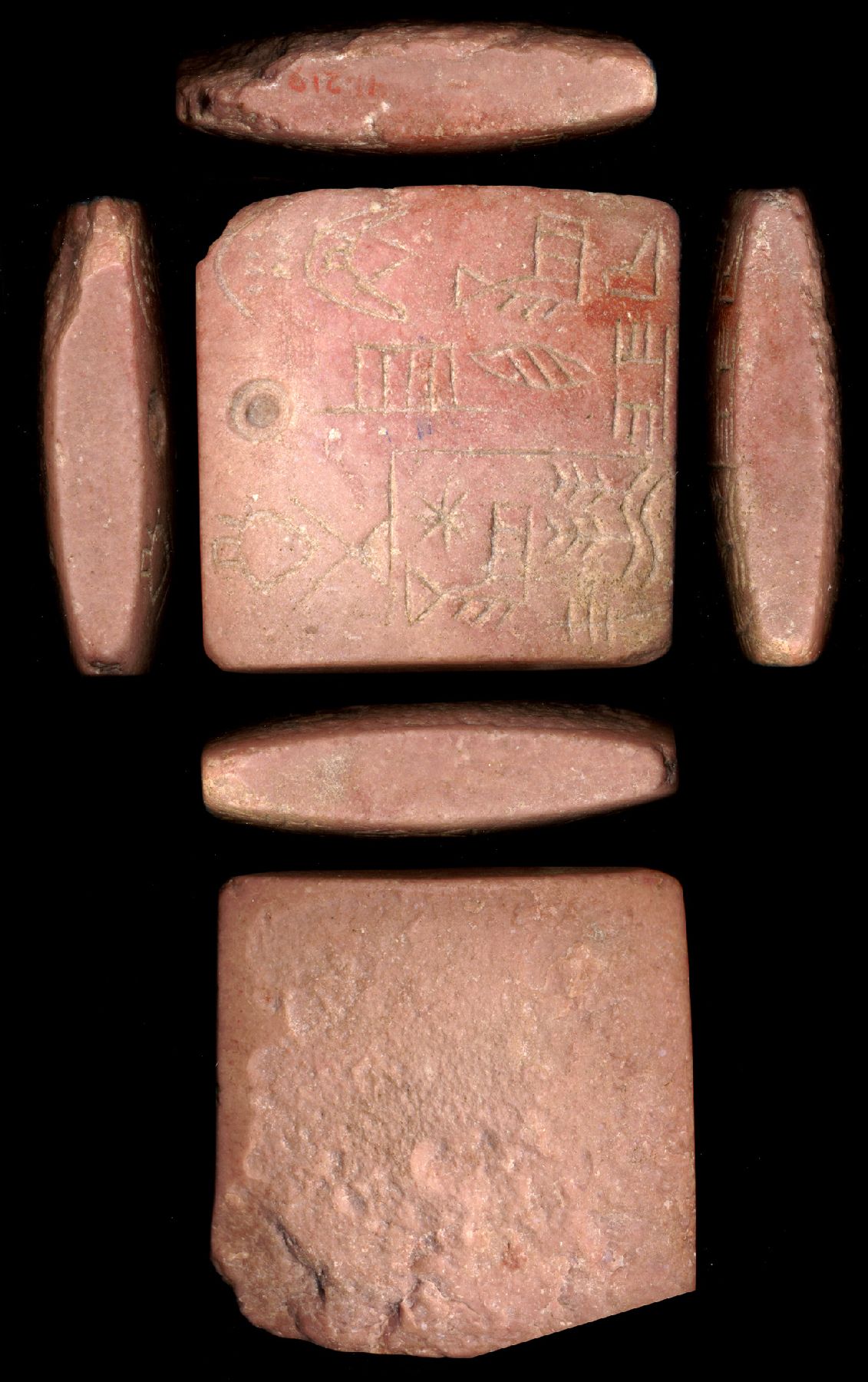|
Mê-Turan
Me-Turan (also Mê-Turan) is an archaeological site in Diyala Governorate Iraq comprising the modern Tell Haddad and the two mounds of Tell al-Sib (also Tell as-Sib). In Neo-Assyrian times it was known as Me-Turnat. It was excavated as part of the Hamrin Dam salvage project. History The city of Me-Turan was occupied in the Isin-Larsa period (Level 4), Old Babylonian period (level 2 and 3), Kassite period, and Neo-Assyrian period (level 1). Founded early in the 2nd millennium BC during the Isin-Larsa times it was controlled by Eshnunna through the reign of several of that cities kings. With the rise of Babylon Me-Turan came under the control of that city. After the end of the Old Bablyonian period the city lay fallow until Neo-Assyrian times, excepting some Kassite era residencial housing. At the surface were nine Parthian Empire, Parthian kilns. Archaeology Tell Haddad is a 6 meter high Tell (archaeology), tell and the largest site in the area after Tell Baradan which it lies 350 ... [...More Info...] [...Related Items...] OR: [Wikipedia] [Google] [Baidu] |
Eshnunna
Eshnunna (also Esnunak) (modern Tell Asmar in Diyala Governorate, Iraq) was an ancient Sumerian (and later Akkadian) city and city-state in central Mesopotamia 12.6 miles northwest of Tell Agrab and 15 miles northwest of Tell Ishchali. Although situated in the Diyala Valley northwest of Sumer proper, the city nonetheless belonged securely within the Sumerian cultural milieu. It is sometimes, in very early archaeological papers, called Ashnunnak or Tupliaš. The tutelary deity of the city was Tishpak (Tišpak) though other gods, including Sin, Adad, and Inanna of Kiti ( Kitītum) were also worshiped there. The personal goddesses of the rulers were Belet-Šuḫnir and Belet-Terraban. History Early Bronze Inhabited since the Jemdet Nasr period, around 3000 BC, Eshnunna was a major city during the Early Dynastic period of Mesopotamia. It is known, from cuneiform records and excavations, that the city was occupied in the Akkadian period though its extent was noticeably le ... [...More Info...] [...Related Items...] OR: [Wikipedia] [Google] [Baidu] |
Nergal
Nergal ( Sumerian: d''KIŠ.UNU'' or ; ; Aramaic: ܢܸܪܓܲܠ; ) was a Mesopotamian god worshiped through all periods of Mesopotamian history, from Early Dynastic to Neo-Babylonian times, with a few attestations indicating that his cult survived into the period of Achaemenid domination. He was primarily associated with war, death, and disease, and has been described as the "god of inflicted death". He reigned over Kur, the Mesopotamian underworld, depending on the myth either on behalf of his parents Enlil and Ninlil, or in later periods as a result of his marriage with the goddess Ereshkigal. Originally either Mammitum, a goddess possibly connected to frost, or Laṣ, sometimes assumed to be a minor medicine goddess, were regarded as his wife, though other traditions existed, too. His primary cult center was Kutha, located in the north of historical Babylonia. His main temple bore the ceremonial name E-Meslam and he was also known by the name Meslamtaea, "he who comes ... [...More Info...] [...Related Items...] OR: [Wikipedia] [Google] [Baidu] |
Archaeological Site
An archaeological site is a place (or group of physical sites) in which evidence of past activity is preserved (either prehistoric or recorded history, historic or contemporary), and which has been, or may be, investigated using the discipline of archaeology and represents a part of the archaeological record. Sites may range from those with few or no remains visible above ground, to buildings and other structures still in use. Beyond this, the definition and geographical extent of a "site" can vary widely, depending on the period studied and the theoretical approach of the archaeologist. Geographical extent It is almost invariably difficult to delimit a site. It is sometimes taken to indicate a settlement of some sort, although the archaeologist must also define the limits of human activity around the settlement. Any episode of deposition, such as a hoard or burial, can form a site as well. Development-led archaeology undertaken as cultural resources management has the disad ... [...More Info...] [...Related Items...] OR: [Wikipedia] [Google] [Baidu] |
Weighing Scale
A scale or balance is a device used to measure weight or mass. These are also known as mass scales, weight scales, mass balances, massometers, and weight balances. The traditional scale consists of two plates or bowls suspended at equal distances from a fulcrum. One plate holds an object of unknown mass (or weight), while objects of known mass or weight, called '' weights'', are added to the other plate until mechanical equilibrium is achieved and the plates level off, which happens when the masses on the two plates are equal. The perfect scale rests at neutral. A spring scale will make use of a spring of known stiffness to determine mass (or weight). Suspending a certain mass will extend the spring by a certain amount depending on the spring's stiffness (or spring constant). The heavier the object, the more the spring stretches, as described in Hooke's law. Other types of scales making use of different physical principles also exist. Some scales can be calibrate ... [...More Info...] [...Related Items...] OR: [Wikipedia] [Google] [Baidu] |
Tell Yelkhi
Tell Yelkhi, is an ancient Near East archaeological site in Diyala Governorate (Iraq). It was examined as part of the Hemrin Dam, Hamrin Dam salvage excavation before it flooded. Other sites a part of that rescue excavation included, Me-Turan, Tell Gubah, Tell Songor, Tellul Hamediyat, Tell Rubeidheh, Tell Madhur, Tell Imlihiye, Tell Rashid, Tell Saadiya and Tell Abada. Some of these sites, including Tell Yelkhi, periodically emerge from the water. The site of Tell Yelhi was settled in the early 3rd millennium BC and occupation continued through the Kassite period late in the 2nd millennium BC. Its name in ancient times is not yet known though Awalki (known during Akkadian, Ur III, and Old Babylonian periods) has been suggested. Archaeology The oval mound (220 meters by 170 meters) rises about 12 meters above the plain, having two peaks, one lower than the other, and covers an area of about 4 hectares. The edges of main mound have eroded somewhat, removing some Level I Kassite r ... [...More Info...] [...Related Items...] OR: [Wikipedia] [Google] [Baidu] |
Cities Of The Ancient Near East
The earliest cities in history were in the ancient Near East, an area covering roughly that of the modern Middle East: its history began in the 4th millennium BC and ended, depending on the interpretation of the term, either with the conquest by the Achaemenid Empire in the 6th century BC or with that by Alexander the Great in the 4th century BC. The largest cities of the Bronze Age Near East housed several tens of thousands of people. Memphis in the Early Bronze Age, with some 30,000 inhabitants, was the largest city of the time by far. Ebla is estimated to have had a population of 40,000 inhabitants in the Intermediate Bronze age. Ur in the Middle Bronze Age is estimated to have had some 65,000 inhabitants; Babylon in the Late Bronze Age similarly had a population of some 50,000–60,000. Niniveh had some 20,000–30,000, reaching 100,000 only in the Iron Age (around 700 BC). In Akkadian and Hittite orthography, URU became a determinative sign denoting a city, or combine ... [...More Info...] [...Related Items...] OR: [Wikipedia] [Google] [Baidu] |
Sargon II
Sargon II (, meaning "the faithful king" or "the legitimate king") was the king of the Neo-Assyrian Empire from 722 BC to his death in battle in 705. Probably the son of Tiglath-Pileser III (745–727), Sargon is generally believed to have become king after overthrowing Shalmaneser V (727–722), probably his brother. He is typically considered the founder of a new dynastic line, the Sargonid dynasty. Modelling his reign on the legends of the ancient rulers Sargon of Akkad, from whom Sargon II likely took his regnal name, and Gilgamesh, Sargon aspired to conquer the known world, initiate a golden age and a new world order, and be remembered and revered by future generations. Over the course of his seventeen-year reign, Sargon substantially expanded Assyrian territory and enacted important political and military reforms. An accomplished warrior-king and military strategist, Sargon personally led his troops into battle. By the end of his reign, all of his major enemies and r ... [...More Info...] [...Related Items...] OR: [Wikipedia] [Google] [Baidu] |
Ashurbanipal
Ashurbanipal (, meaning " Ashur is the creator of the heir")—or Osnappar ()—was the king of the Neo-Assyrian Empire from 669 BC to his death in 631. He is generally remembered as the last great king of Assyria. Ashurbanipal inherited the throne as the favored heir of his father Esarhaddon; his 38-year reign was among the longest of any Assyrian king. Though sometimes regarded as the apogee of ancient Assyria, his reign also marked the last time Assyrian armies waged war throughout the ancient Near East and the beginning of the end of Assyrian dominion over the region. Esarhaddon selected Ashurbanipal as heir 673. The selection of Ashurbanipal bypassed the elder son Shamash-shum-ukin. Perhaps in order to avoid future rivalry, Esarhaddon designated Shamash-shum-ukin as the heir to Babylonia. The two brothers jointly acceded to their respective thrones after Esarhaddon's death in 669, though Shamash-shum-ukin was relegated to being Ashurbanipal's closely monitored vassal. Mu ... [...More Info...] [...Related Items...] OR: [Wikipedia] [Google] [Baidu] |
Laws Of Eshnunna
The Laws of Eshnunna (abrv. LE) are inscribed on two cuneiform tablets discovered in Tell Abū Harmal, Baghdad, Iraq. The Iraqi Directorate of Antiquities headed by Taha Baqir unearthed two parallel sets of tablets in 1945 and 1947. The two tablets are separate copies of an older source and date back to ca. 1930 BC. An additional fragment was later found at Me-Turan. The differences between the Code of Hammurabi and the Laws of Eshnunna significantly contributed to illuminating the development of ancient and cuneiform law. In distinction from the other Mesopotamian collections of law, this one got its name after the city where it had originated – Eshnunna, located on the bank of the Diyala River, tributary to the Tigris, north of Ur. Eshnunna became politically important after the fall of the third dynasty of Ur, founded by Ur-Nammu. Contents This collection of laws is not a real systemized codex; nearly sixty of its sections are preserved. The Laws are written in Akkadi ... [...More Info...] [...Related Items...] OR: [Wikipedia] [Google] [Baidu] |
Sumerian Language
Sumerian ) was the language of ancient Sumer. It is one of the List of languages by first written account, oldest attested languages, dating back to at least 2900 BC. It is a local language isolate that was spoken in ancient Mesopotamia, in the area that is modern-day Iraq, Iraq. Akkadian language, Akkadian, a Semitic languages, Semitic language, gradually replaced Sumerian as the primary spoken language in the area (the exact date is debated), but Sumerian continued to be used as a sacred, ceremonial, literary, and scientific language in Akkadian-speaking Mesopotamian states, such as Assyria and Babylonia, until the 1st century AD. Thereafter, it seems to have fallen into obscurity until the 19th century, when Assyriologists began Decipherment, deciphering the cuneiform inscriptions and excavated tablets that had been left by its speakers. In spite of its extinction, Sumerian exerted a significant influence on the languages of the area. The Cuneiform, cuneiform script, original ... [...More Info...] [...Related Items...] OR: [Wikipedia] [Google] [Baidu] |
Akkadian Language
Akkadian ( ; )John Huehnergard & Christopher Woods, "Akkadian and Eblaite", ''The Cambridge Encyclopedia of the World's Ancient Languages''. Ed. Roger D. Woodard (2004, Cambridge) Pages 218–280 was an East Semitic language that is attested in ancient Mesopotamia ( Akkad, Assyria, Isin, Larsa, Babylonia and perhaps Dilmun) from the mid- third millennium BC until its gradual replacement in common use by Old Aramaic among Assyrians and Babylonians from the 8th century BC. Akkadian, which is the earliest documented Semitic language, is named after the city of Akkad, a major centre of Mesopotamian civilization during the Akkadian Empire (–2154 BC). It was written using the cuneiform script, originally used for Sumerian, but also used to write multiple languages in the region including Eblaite, Hurrian, Elamite, Old Persian and Hittite. The influence of Sumerian on Akkadian went beyond just the cuneiform script; owing to their close proximity, a lengthy span of con ... [...More Info...] [...Related Items...] OR: [Wikipedia] [Google] [Baidu] |
Extispicy
In the religion of ancient Rome, a haruspex was a person trained to practise a form of divination called haruspicy, the inspection of the entrails of sacrificed animals, especially the livers of sacrificed sheep and poultry. Various ancient cultures of the Near East, such as the Babylonians, also read omens specifically from the liver, a practice also known by the Greek term hepatoscopy (also hepatomancy). The Roman concept is directly derived from Etruscan religion, as one of the three branches of the ''disciplina Etrusca''. Etymology The Latin terms ''haruspex'' and ''haruspicina'' are from an archaic word, ''hīra'' = "entrails, intestines" (cognate with ''hernia'' = "protruding viscera" and ''hira'' = "empty gut"; PIE '' *ǵʰer-'') and from the root '' spec-'' = "to watch, observe". The Greek ἡπατοσκοπία ''hēpatoskōpia'' is from '' hēpar'' = "liver" and '' skop-'' = "to examine". Ancient Near East The Babylonians were famous for hepatoscopy. This p ... [...More Info...] [...Related Items...] OR: [Wikipedia] [Google] [Baidu] |







